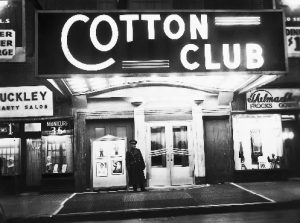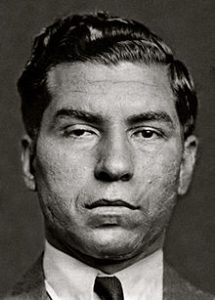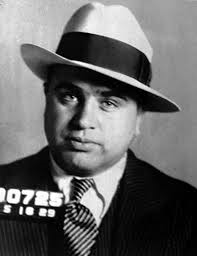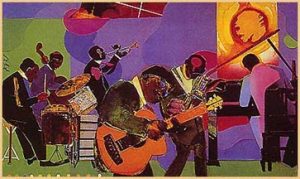The Change to Come
The roaring twenti es were a time of immense change and evolution in America. People dressed differently, spoke differently, and even acted differently. The social climate evolved exponentially and politics was becoming more modern and worldly. People were becoming more lenient with how they spent their money, jazz was emerging in popular music, women gained the right to vote, and a nationwide prohibition of alcohol was set in place. Organized crime was also gaining momentum stateside, with the emergence of Al Capone and the arrival of Carlo Gambino from Sicily.
es were a time of immense change and evolution in America. People dressed differently, spoke differently, and even acted differently. The social climate evolved exponentially and politics was becoming more modern and worldly. People were becoming more lenient with how they spent their money, jazz was emerging in popular music, women gained the right to vote, and a nationwide prohibition of alcohol was set in place. Organized crime was also gaining momentum stateside, with the emergence of Al Capone and the arrival of Carlo Gambino from Sicily.
Fashion in the 1920’s was drastically different from that of past decades. Rigid, defined clothing from the victorian era was abandoned for more contemporary, flamboyant and colorful attire. Dance clubs became popular in the 1920’s along with a wide array of new dances such as the charleston, foxtrot, and the shimmy. A new generation of women was born during this time known asthe flappers. They were stylish, modern, and wordly women who lived independent and extravagent lifestyles.
The Harlem Renaissance was Heavily influenced by African American culture. There were many influential African American writers, artists and musicians that emerged during the Harlem Renaissance such as jazz musicians Duke Ellington, Fats Waller, and Willy Smith. African American writers such as Langston Hughes, Countee Cullen, Zora Neale Hurston, Richard Wright, and W. E. B. Du Bois were also cast into the limelight. They all wrote about the struggles of African American people in what was then a predominately white nation, at least in terms of who had political influence and proper representation by the government.
Under  all of this, behind the scenes and making waves within the New York underworld were the many organized crime syndicates growing and gaining influence both in the illicit activities they took part in as well as politics. Charles “Lucky” Luciano (to the left), considered by many to be the father of the american mafia, built up his empire by running rum, racketeering, and running gambling rings. Al Capone (below), as
all of this, behind the scenes and making waves within the New York underworld were the many organized crime syndicates growing and gaining influence both in the illicit activities they took part in as well as politics. Charles “Lucky” Luciano (to the left), considered by many to be the father of the american mafia, built up his empire by running rum, racketeering, and running gambling rings. Al Capone (below), as well built up his empire on gambling, racketeering, and rum running. Power was corrupt in these times so criminals were able to sustain their business by paying off lawyers and judges, as well as resorting to other means that were deemed necessary
well built up his empire on gambling, racketeering, and rum running. Power was corrupt in these times so criminals were able to sustain their business by paying off lawyers and judges, as well as resorting to other means that were deemed necessary
Research links follow:
http://www.history.com/topics/roaring-twenties
http://www.history.com/topics/black-history/harlem-renaissance
https://en.wikipedia.org/wiki/Lucky_Luciano



oceanmtnsky • Dec 8, 2015 at 10:47 am
https://youtu.be/Z3ozfYC9CZE?list=PLXgoPmW-LCpykUMF7a61wZtZ8eSDhqPkR